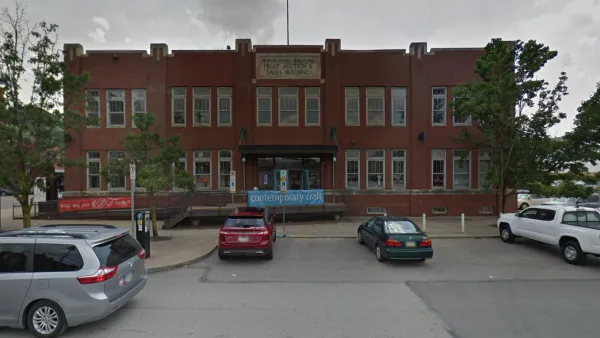The Pittsburgh Post-Gazette recently published an investigation of the city's efforts to buy and rehabilitate vacant properties in the troubled neighborhood of Homewood.

Ashley Murray and Joel Jacobs provide in-depth reporting on the city of Pittsburgh's efforts to revitalize the area of the city known as Homewood, "long plagued by blight and crime."
The city has spent $3.6 million buying vacant properties in treasurer's sales over unpaid taxes, "but dozens of the homes remain eyesores and, in some cases, the target of code violations by the city’s own inspectors," according to the article.
"The Pittsburgh Post-Gazette examined the records of 133 buildings owned by the city — including houses and storefronts — and found inspectors slapped violations on nearly 60% of them, including homes that were not only unfit for human habitation, but could place people in imminent danger," reports Murray and Jacobs.
While property owners can be punished for code violations, the city is not subject to the same enforcement.
The program of acquiring and improving vacant and blighted structures is taking on new importance as community groups have been pushing for "one of the most ambitious plans in the neighborhood’s history to promote green space, affordable housing and a business corridor to help an area that has undergone dramatic changes."
The city's vacant properties program is intended to "pave the way for development and the potential for new homes, parks and stores" under a land bank run by the Urban Redevelopment Authority. "But so far, most of the properties have not been turned over to public agencies or private investors since the city ramped up acquisitions a decade ago."
The source article includes infographics, more data, and specific examples of blight among the properties acquired by the city.

National Parks Layoffs Will Cause Communities to Lose Billions
Thousands of essential park workers were laid off this week, just before the busy spring break season.

Retro-silient?: America’s First “Eco-burb,” The Woodlands Turns 50
A master-planned community north of Houston offers lessons on green infrastructure and resilient design, but falls short of its founder’s lofty affordability and walkability goals.

Delivering for America Plan Will Downgrade Mail Service in at Least 49.5 Percent of Zip Codes
Republican and Democrat lawmakers criticize the plan for its disproportionate negative impact on rural communities.

Test News Post 1
This is a summary

Test News Headline 46
Test for the image on the front page.

Balancing Bombs and Butterflies: How the National Guard Protects a Rare Species
The National Guard at Fort Indiantown Gap uses GIS technology and land management strategies to balance military training with conservation efforts, ensuring the survival of the rare eastern regal fritillary butterfly.
Urban Design for Planners 1: Software Tools
This six-course series explores essential urban design concepts using open source software and equips planners with the tools they need to participate fully in the urban design process.
Planning for Universal Design
Learn the tools for implementing Universal Design in planning regulations.
EMC Planning Group, Inc.
Planetizen
Planetizen
Mpact (formerly Rail~Volution)
Great Falls Development Authority, Inc.
HUDs Office of Policy Development and Research
NYU Wagner Graduate School of Public Service




























